Table of Contents
Guide
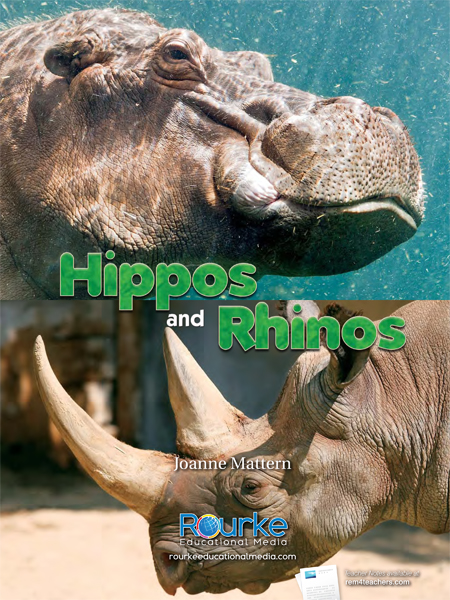

2013 Rourke Educational Media
All rights reserved. No part of this book may be reproduced or utilized in any form or by any means, electronic or mechanical including photocopying, recording, or by any information storage and retrieval system without permission in writing from the publisher.
www.rourkeeducationalmedia.com
PHOTO CREDITS: : Creative Commons;
Edited by Precious McKenzie
Cover Design by Renee Brady
Interior Design by Cory Davis
Library of Congress PCN Data
Hippos and Rhinos / Joanne Mattern
(Eye to Eye with Animals)
ISBN 978-1-61810-117-4 (hard cover) (alk. paper)
ISBN 978-1-61810-250-8 (soft cover)
Library of Congress Control Number: 2011944408
Rourke Educational
Media Printed in the United States of America,
North Mankato, Minnesota

rourkeeducationalmedia.com
customerservice@rourkeeducationalmedia.com PO Box 643328 Vero Beach, Florida 32964
Chapter 1
Lumbering Land Animals
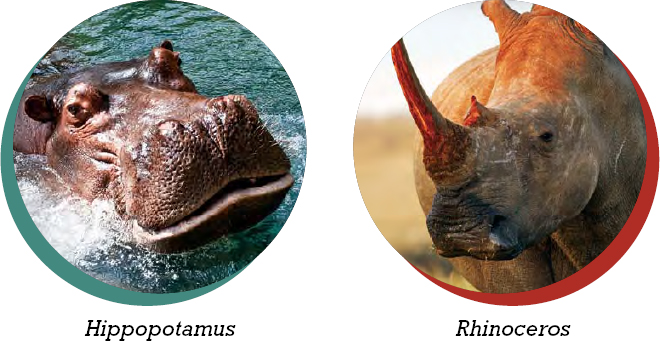
Hippos and rhinos are two of the heaviest animals that walk on planet Earth. A full-grown hippo weighs at least 3,300 pounds (1,500 kilograms), but many weigh a lot more. Some hippos have been measured at more than 9,000 pounds (4,080 kilograms). Thats a lot of hippo!
Rhinos are supersized too. The heaviest rhinos weigh about 8,000 pounds (3,630 kilograms). Rhinos are the second largest land animals. Only the elephant is bigger. Both rhinos and hippos can be very dangerous to people. If you startle one of these big animals, they are likely to attack!

WHATS
YOUR NAME?
The words hippo and rhino are nicknames. The full names of these big beasts are hippopotamus and rhinoceros.

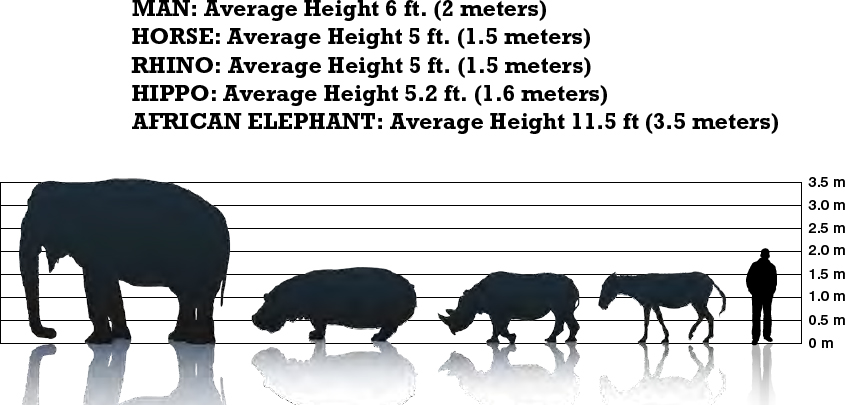
Chapter 2
Ancient Beasts

Hippos and rhinos have lived on Earth for millions of years. Hippos have been around for more than 25 million years. Scientists found of ancient hippos in Asia. In 2004, scientists discovered ancient hippo fossils in coastal Great Britain. Scientists did not know ancient hippos lived that far north.

A scientist scans a fossil hippopotamus tooth with a laser to discover clues about how old it is.
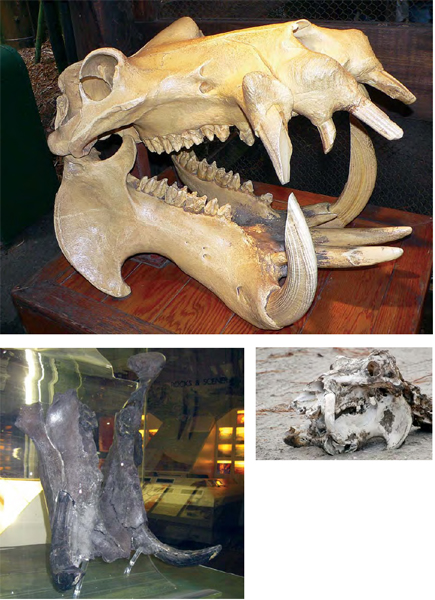
FUN FACT
Ancient hippos were even larger than the hippos we know today. The hippo fossils found in Great Britain could have belonged to hippos that were two to three tons larger than modern hippos.
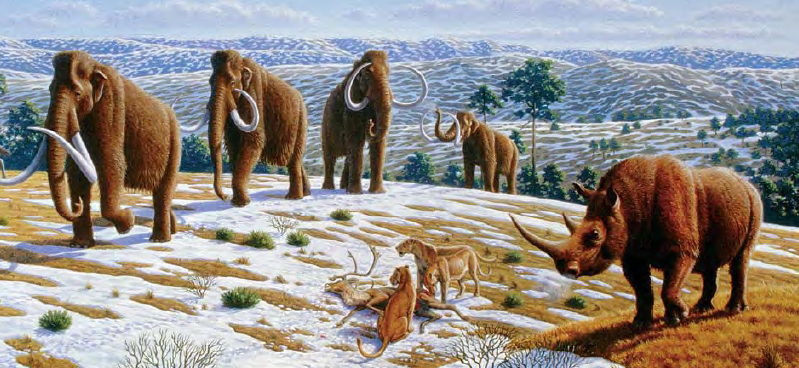
Rhinos have been on Earth even longer than hippos. Fossils show that rhinos have been around for about 35 million years. Scientists discovered fossilized remains of a woolly rhino in the Himalayas. This rhino had a large, flat horn which scientists think it used to push snow out of its way when it looked for vegetation to eat.
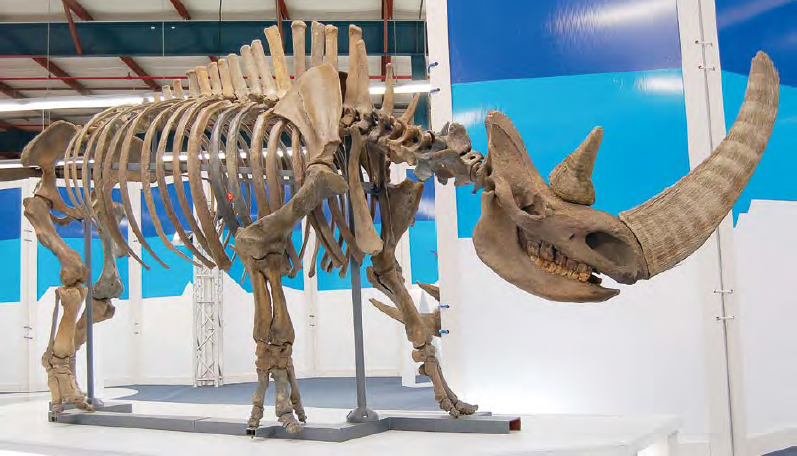
This skeleton of an ancient rhinoceros shows just how large its horn was!

Both hippos and rhinos got their names from the ancient Greeks. The word hippopotamus comes from two Greek words that mean river horse. The ancient Greeks may have picked that name because hippos are large and they are such good swimmers.
The rhinoceross name also describes what it looks like. In Greek, rhino means nose and ceros means horn. The rhinos horn is not a hard bone at all. It is made out of .

Hippos, with their large bodies and tremendous jaws, are some of the deadliest animals on the planet.
Chapter 3
Life as a Hippo
Hundreds of years ago hippos lived all over Asia, Africa, and Central America. Over the years, hippos in Asia and Central America died out because there wasnt enough land or food to support them. People farmed the land around rivers and lakes, leaving little food and for hippos. People would kill hippos that damaged their crops. Today, the only place hippos live in the wild is in Africa.

There are two kinds of hippos, river hippos and pygmy hippos. The river hippo lives in near water. Pygmy hippos live in the West African rainforest. It is very hot and wet there.
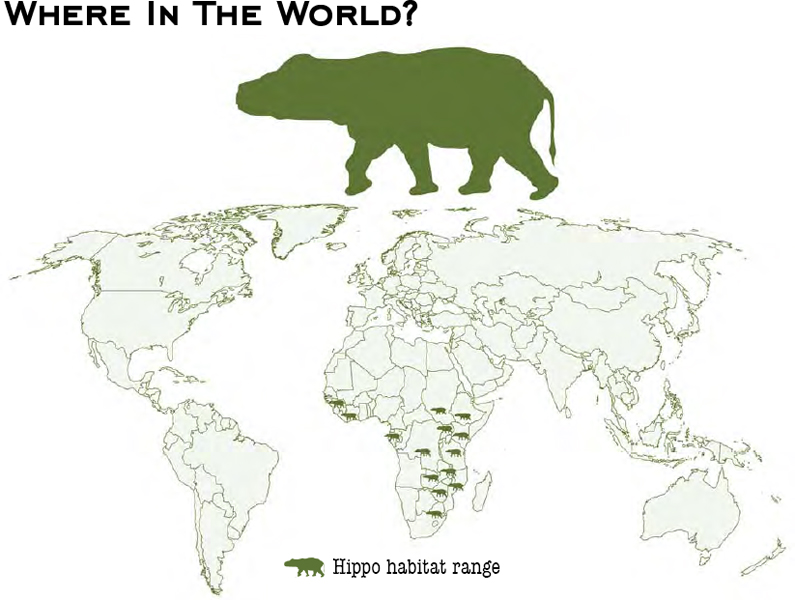
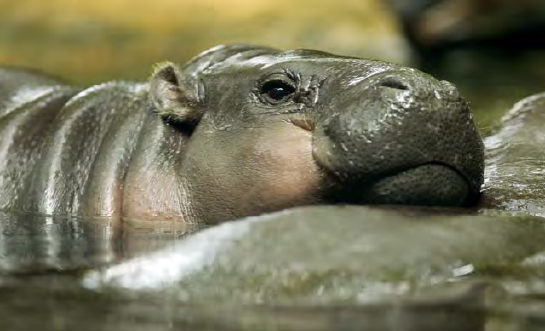
A MINI-HIPPO
Pygmy hippos are smaller than river hippos. They only weigh about 600 pounds (275 kilograms). Pygmies are also a lot more shy. While river hippos live in large
Hippos are on grass and leaves. Hippos travel the same well-worn path night after night. They usually graze by themselves for about five hours and then return to the hippo path, slipping back into the water before daylight.

If hippos can not find enough vegetation to eat they will migrate as far as 24 to 30 miles (40-60 km) in search of food.






































